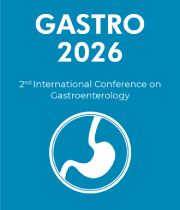HYBRID EVENT: You can participate in person at London, UK from your home or work.
Upper GI Tract
Upper GI Tract
The oral cavity and salivary glands, as well as the oesophagus, stomach, and small intestine (duodenum, jejunum, and ileum), compose the upper GI tract. The exact demarcation separating upper and lower can differ. GI dysfunction can cause a wide range of symptoms. Heartburn, abdominal discomfort, dyspepsia, nausea, vomiting, diarrhoea, constipation, and gastrointestinal bleeding are all common GI symptoms. A range of imaging modalities can be used to assess diseases of the upper gastrointestinal (GI) tract. Crohn's Disease (CD) affecting the upper gastrointestinal tract is an elusive clinical entity with limited or unclear symptomatology, eluding clinical suspicion and delaying diagnostic assessment.
- Disease of Upper GI tract
- Diagnosis and Imaging techniques
- Prevention and Risk factors
- Treating Upper GI tract disorders



